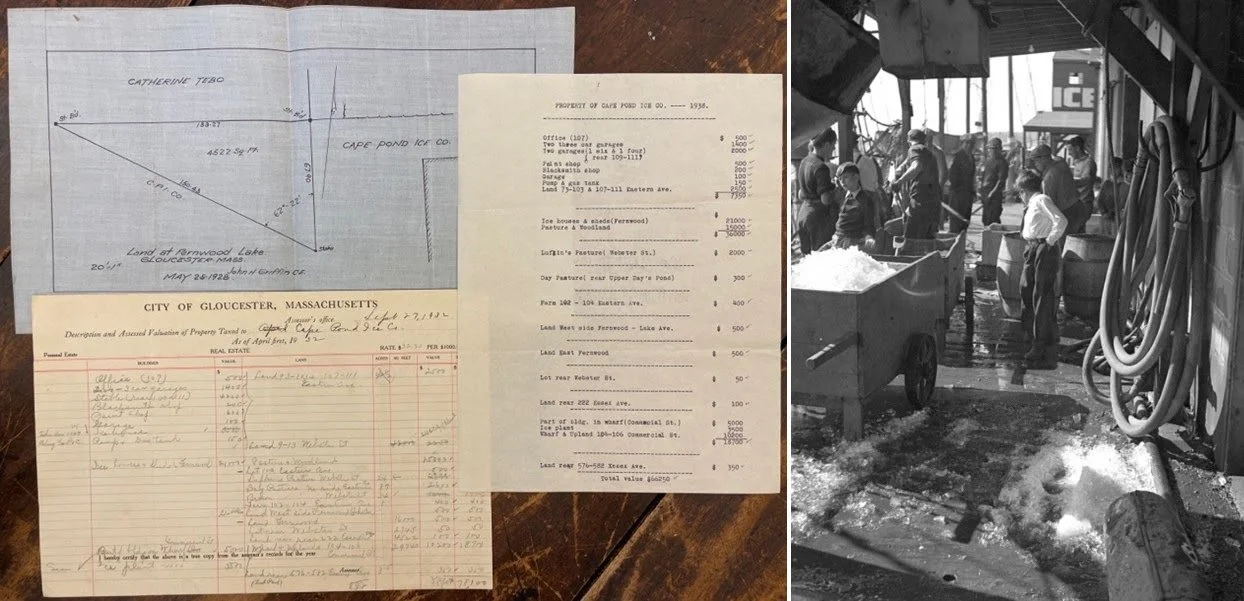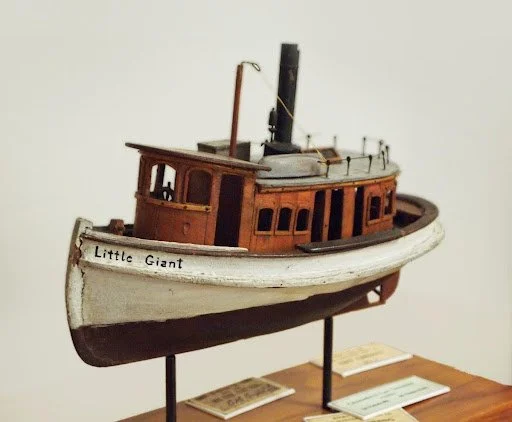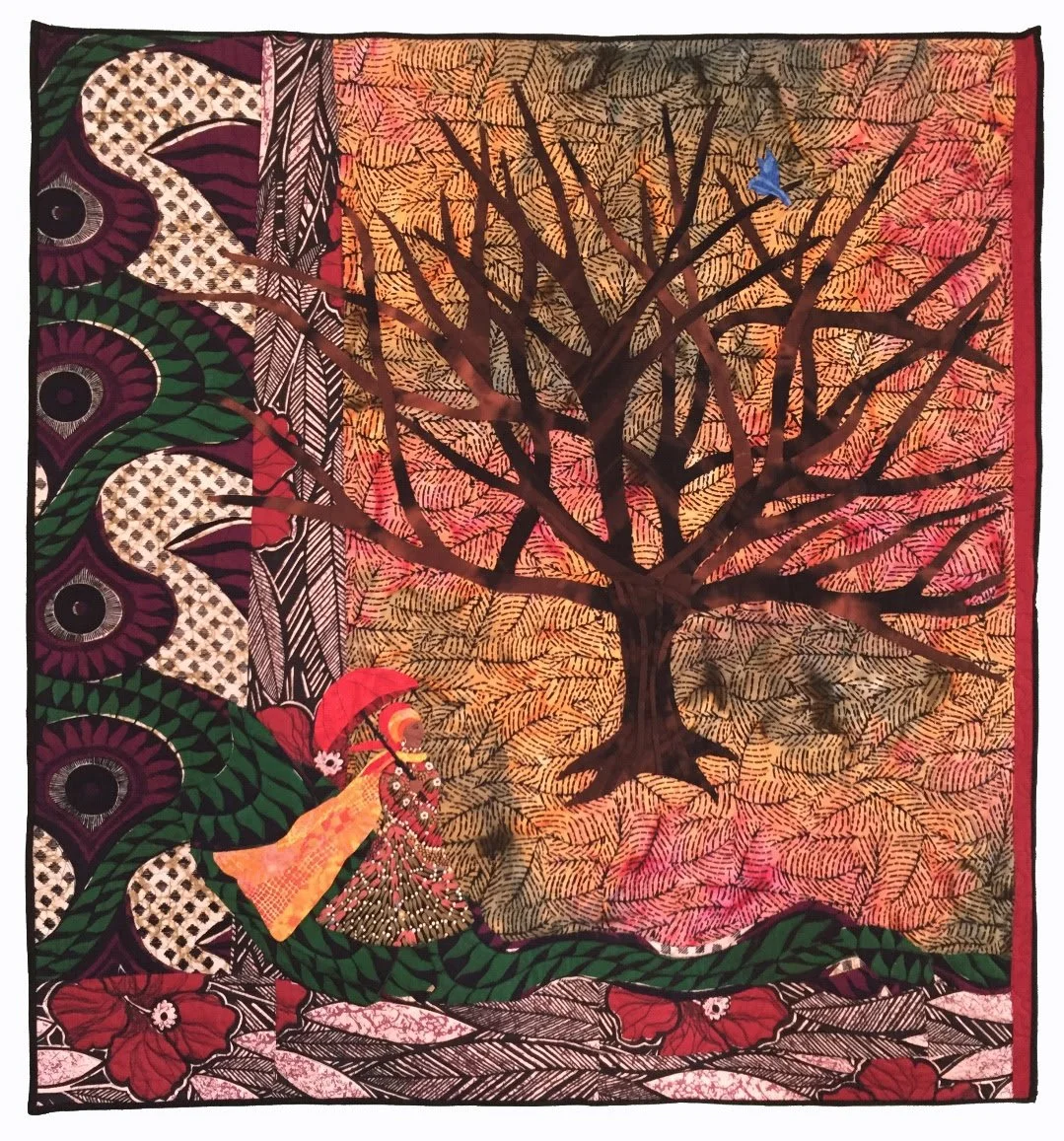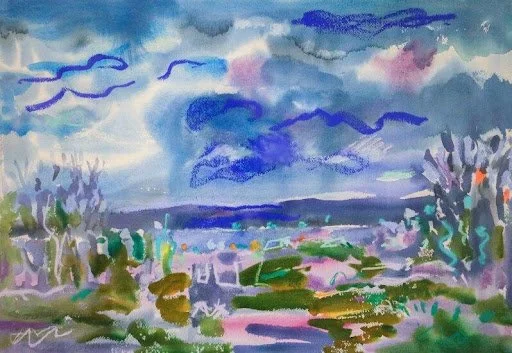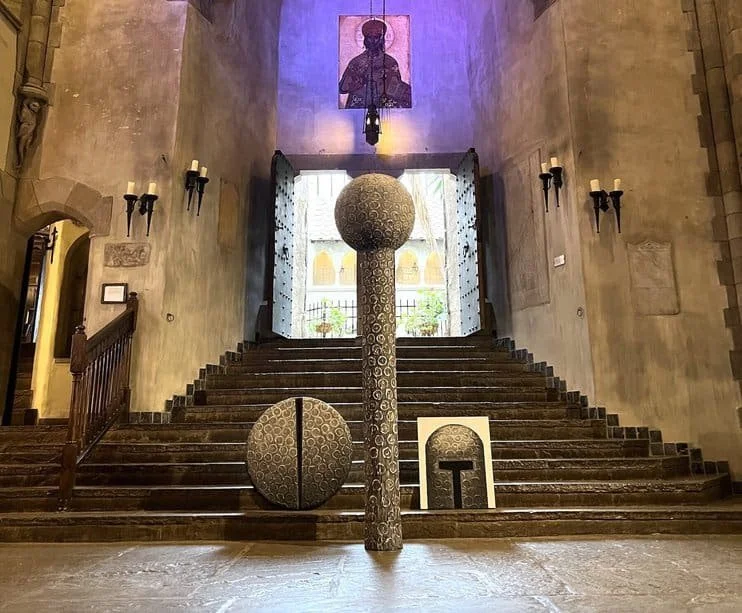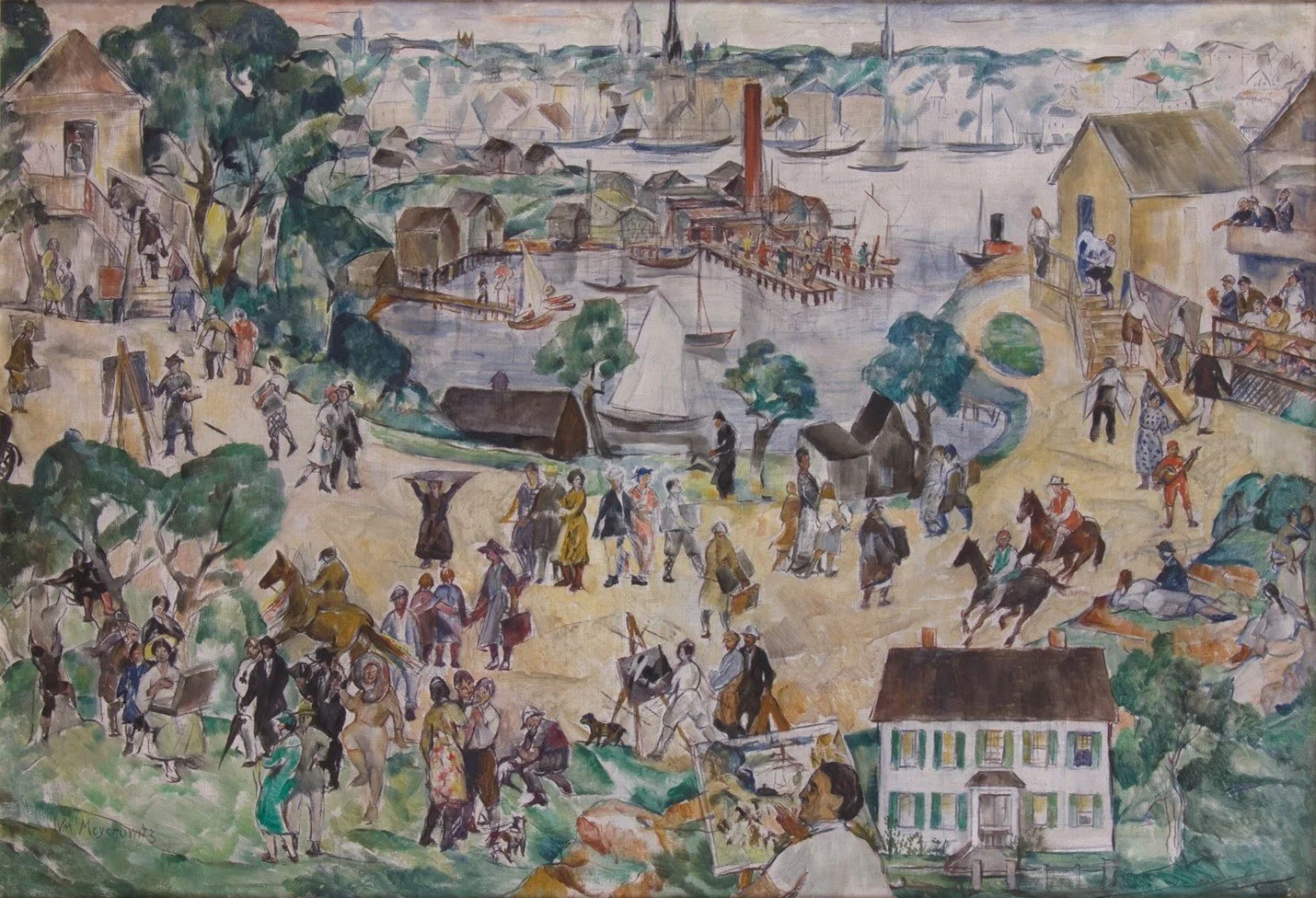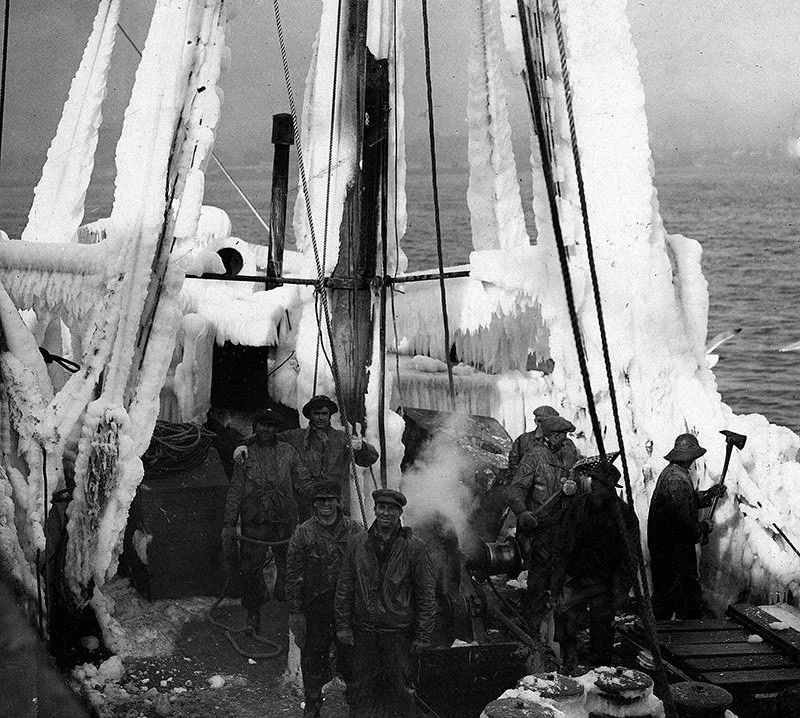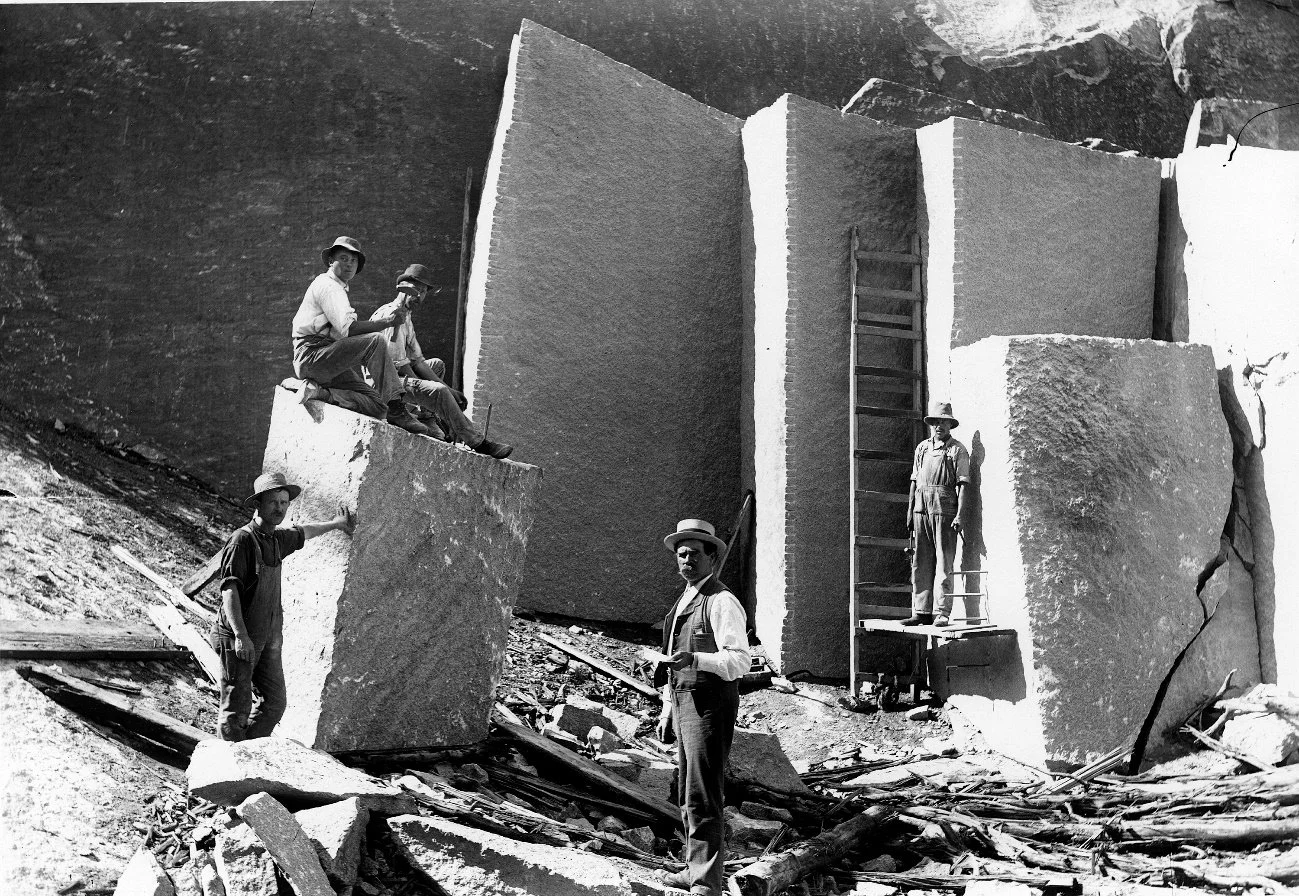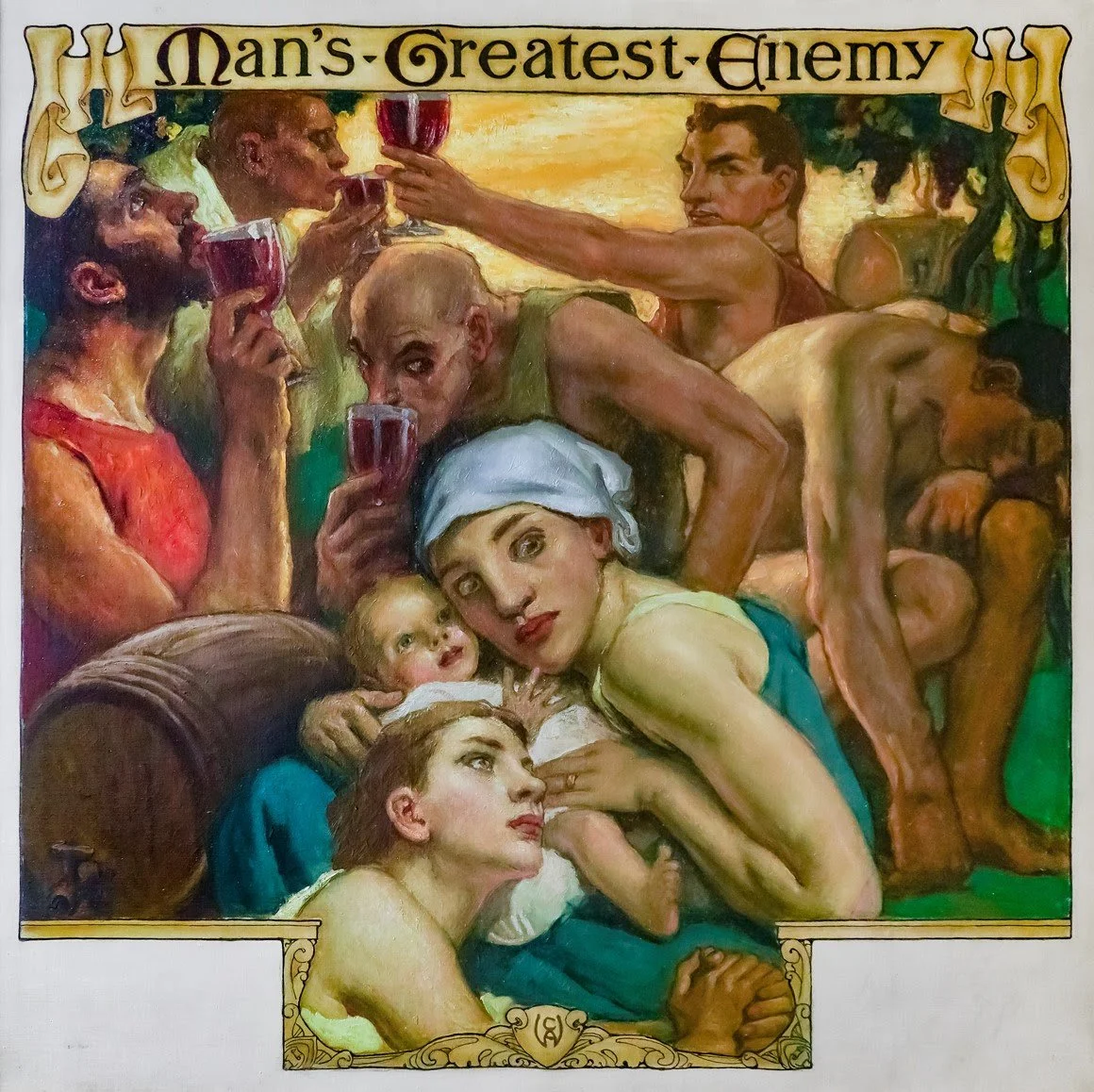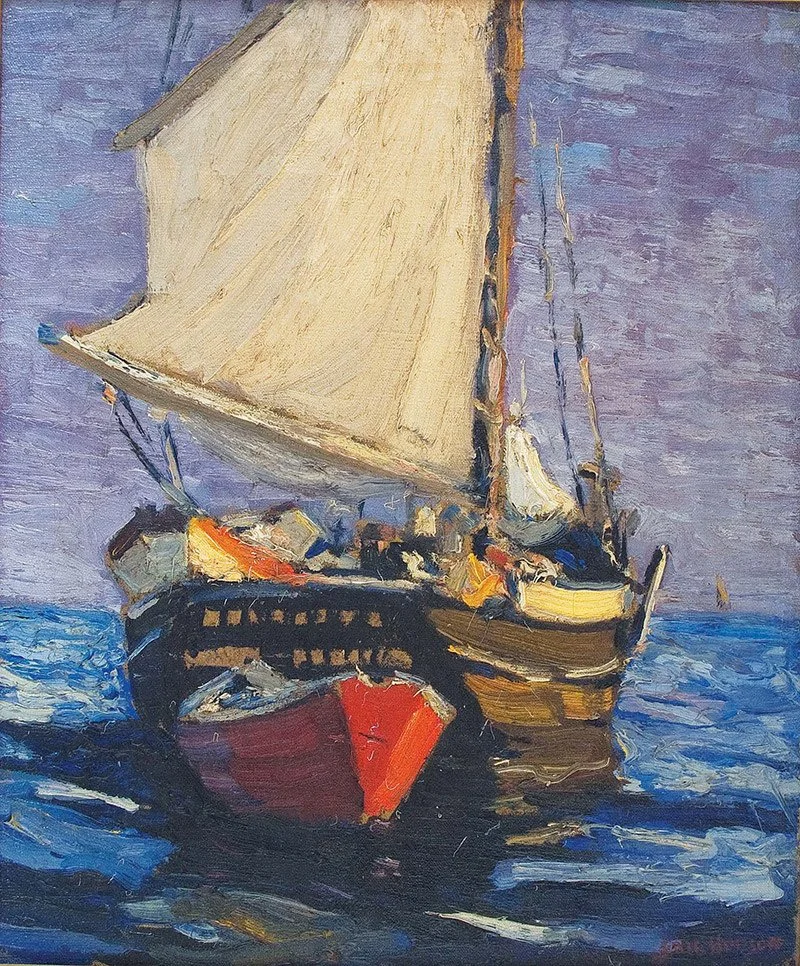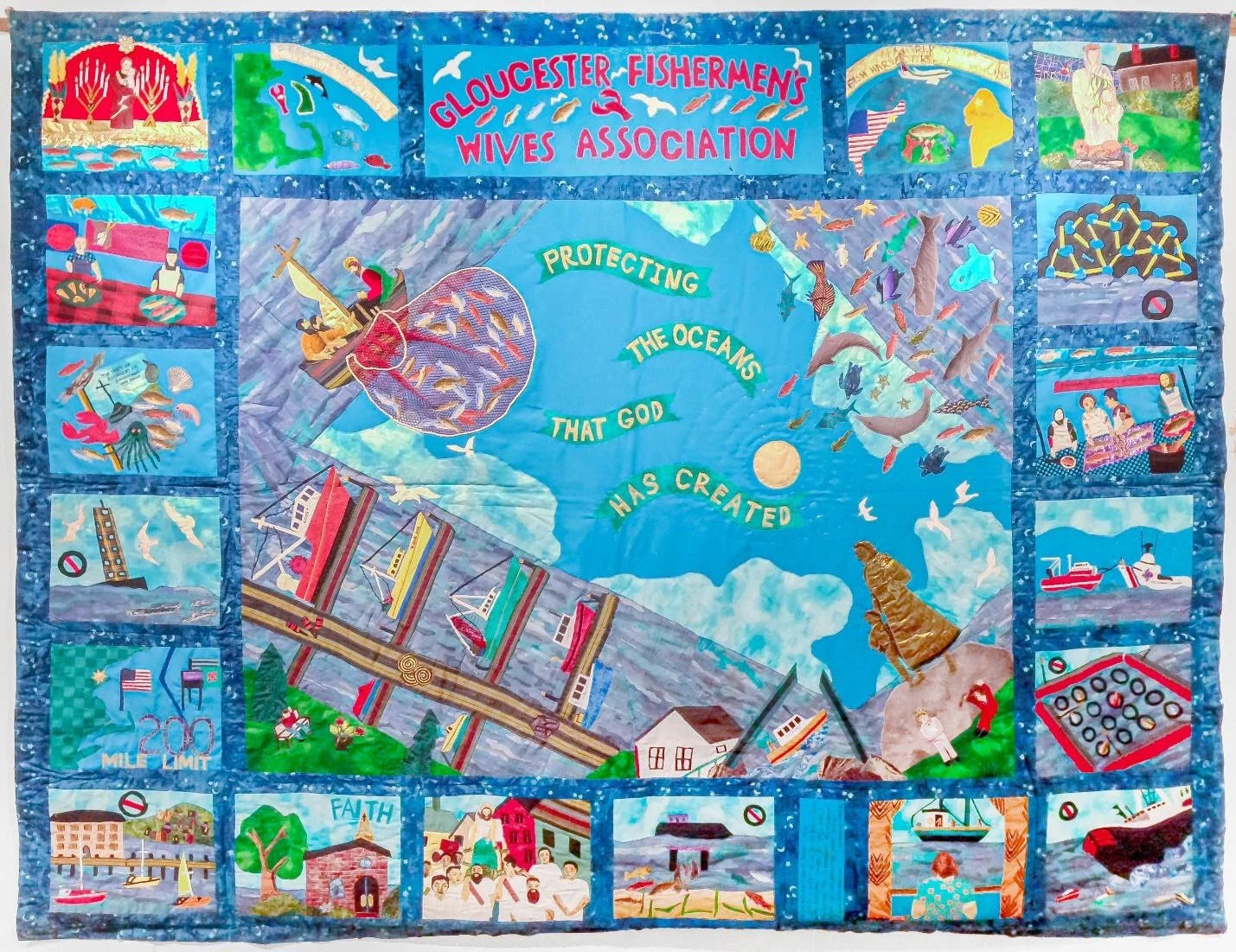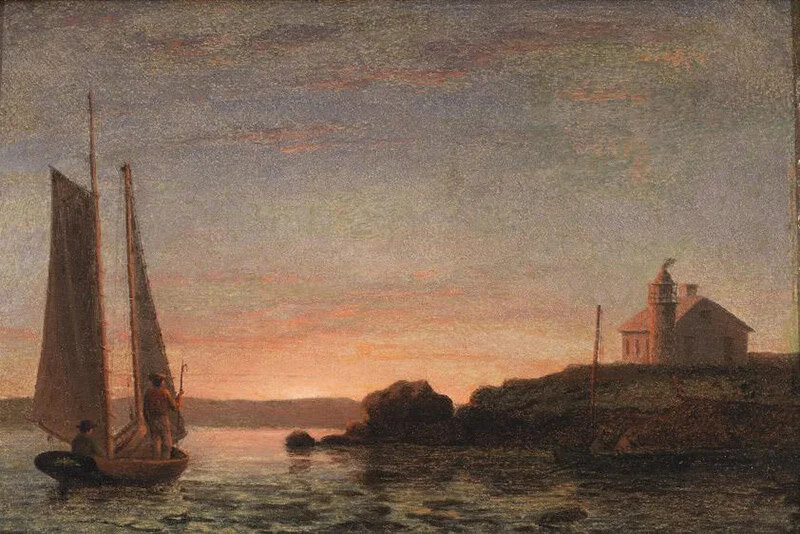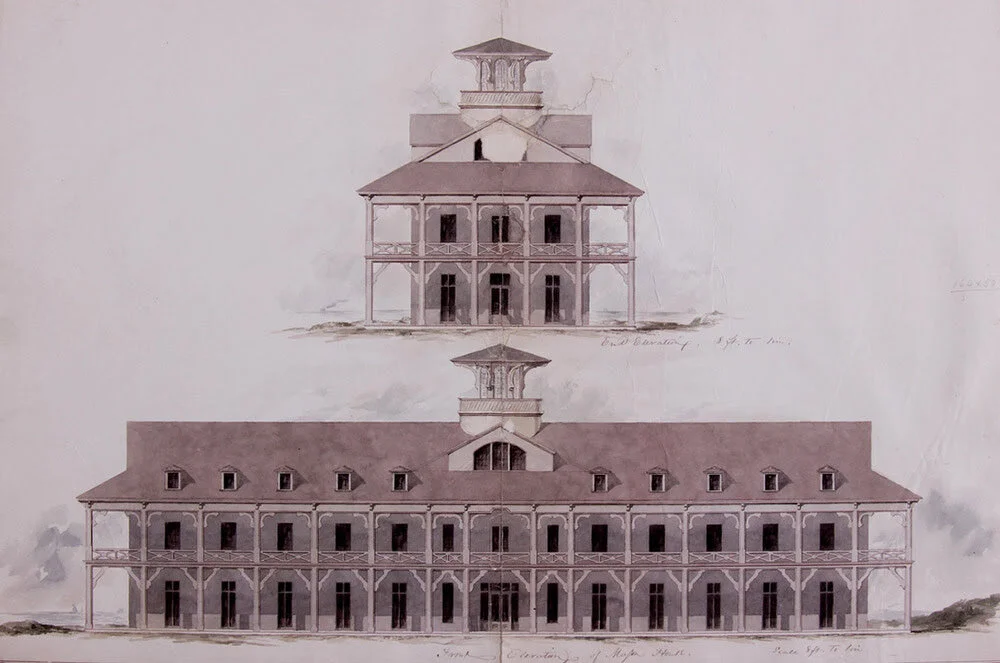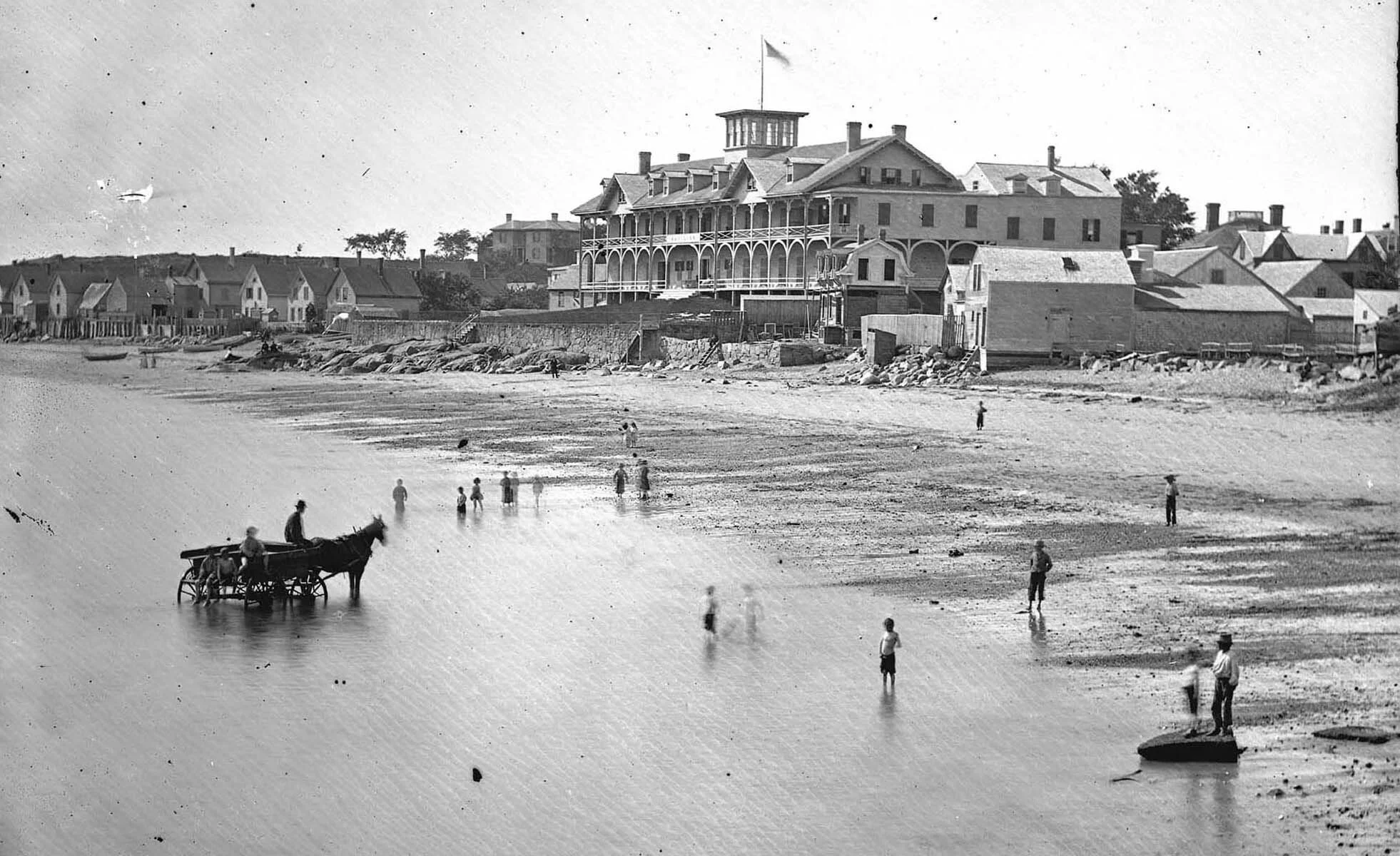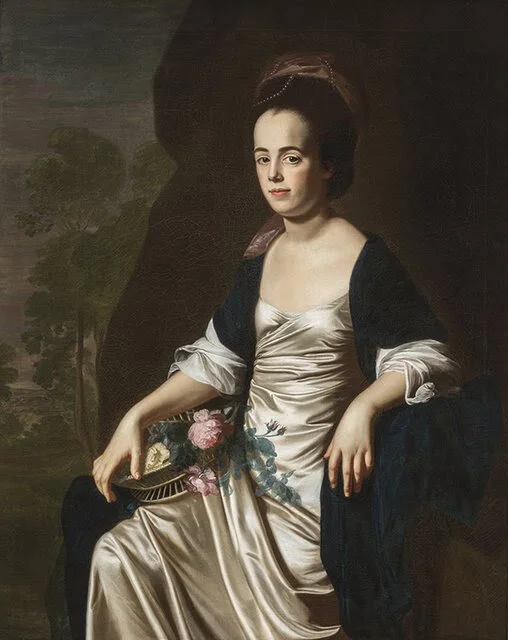
Boating formal wear
Advertisement mock-up for “This is Boatwear,” in the MIGHTY-MAC Collection of the Cape Ann Museum Library and Archives, Gloucester, Mass.
The Eastern Yacht Club, in Gloucester.
— Photo by Oceanhistory
New England's icier past
At the Cape Ann Museum, Gloucester, Mass.: Left, items from the Cape Pond Ice Company Collection, including blueprints and listings of assets. Right, Cape Pond Ice Wharf, circa 1930s.
—Photo by Henry Williams
Winters were colder and longer in southern New England not that long ago, historically speaking. Ice was a major “crop,’’ with much of it shipped in sawdust to warmer climes, and many harbors froze up most winters, sometimes for weeks.
But not for exterior use
“Gloucester Linens” (acrylic on marine canvas), by Barbara Aparo, at the Cape Ann Museum, Gloucester, Mass.
The noted Shingle Style Essex Town Hall and Public Library, in Essex, Mass. (1894), designed by Frank W. Weston.
Good ferries
“Model of the Steam Ferry Little Giant (wood, metal), by John Gardner Weld (1879-1969), at the Cape Ann Museum, Gloucester, Mass.
The museum says:
“Steam-powered ferries were an important means of transportation throughout the 19th Century and into the early 20th, linking Cape Ann to seaports up and down the Eastern Seaboard and to the rest of the world. In Gloucester, ferry service was also available around the Inner Harbor, helping get residents to work and visitors to scenic sites around the city.
“The Little Giant provided passenger ferry service around Gloucester’s Inner Harbor for nearly 40 years. Built in 1878 at the John Bishop Shipyard in Gloucester, the jaunty vessel was 46 feet long and 16 feet in breadth. Her cabins were finished in black walnut and oak, and she had long wooden benches on her upper deck sheltered by a striped awning.’’
Quilted homecoming
Going Home II (quilt), by Doris Prouty (1947-2020) (Collection of the Prouty Family), in her posthumous show in “Her Mind’s Eye.’’ at the Cape Ann Museum, Gloucester, through July 31.
The museum says:
“Working in vibrant colors and incorporating an array of shapes and patterns, Prouty’s quilts are founded in the traditions of African quilt makers and vividly capture scenes and stories about her life and community on Cape Ann. Beginning in the 1980s with traditional block patterns, Prouty moved on to appliqued quilts with pictures.’’
The mornings are sometimes nice, too
“Cape Ann Evening” (c. 1979) (watercolor and pastel on paper), by Nell Blaine (1922-1996), at the Cape Ann Museum, Gloucester, Mass.
Magical wetland
“Sunset on the Marshes” (on the Massachusetts North Shore) (1867) (oil on canvas), by Martin Johnson Heade (1819-1904), at the Cape Ann Museum, Gloucester, Mass.
— Photography by Bob Packert
Protection art at Hammond Castle, in Gloucester
Part of Sarah Dineen’s show “Protection: An Abstract Art Installation,’’ at Hammond Castle Museum, Gloucester, Mass., March 19-March 30.
The museum says she has “amassed an army of painted helmets, shields, tubes, and microphone-trees... Working in multiples to magnify the uncanny human and industrial presence of each form, she uses abstraction to suggest familiarity while leaving open to the viewer the possibilities of their own imagination." The pieces will be available to buy, with some of the proceeds to go to support the museum.
The castle, built in 1926-1929, was the home and laboratory of John Hays Hammond, Jr., an inventor and pioneer in the study of remote control who held over 400 patents. The building had modern and 15th-, 16th-, and 18th-century architectural elements and sits on a rocky cliff overlooking Gloucester Harbor.
The front of Hammond castle
— Photo by Dale E. Martin
Busy, busy, busy
“Gloucester Humoresque” (1923, oil on canvas), by William Meyerowitz (1896-1981) at the Cape Ann Museum, Gloucester, Mass.
Frozen food indeed
“Ready for work on the Trawler Saturn” (January 1928). Collection of the Cape Ann Museum Library & Archives, Gloucester, Mass.
Stoned on Cape Ann
“Cheves Quarry, Lanesville, MA.’’ Barbara Erkkila Collection of the Cape Ann Museum Library & Archives, Gloucester, MA. Gift of Barbara Erkkila, 1994.
The Lanesville section of Gloucester had a thriving granite quarry business in the 19th Century. But it was dangerous work.
Even in moderation?
“Man’s Greatest Enemy” (c. 1915, oil on canvas), by Charles Allan Winter (1869-1942), at the Cape Ann Museum, Gloucester, Mass.
Paintings from two revered coastal art centers
“Under Dark Sky” (oil on canvas), by Eric Hudson (1864-1932), owned by the Monhegan Museum of Art & History, Monhegan Island, Maine.
The Cape Ann Museum, in Gloucester, Mass., is hosting a special exhibition, “Cape Ann & Monhegan Island Vistas: Contrasted New England Art Colonies,’’ through Feb. 13. It’s in collaboration with the Monhegan Museum of Art & History. The exhibition shows the growth of two of New England’s oldest and most revered summer art colonies. It features works by artists who visited and were inspired by both places, including Theresa Bernstein, Walter Farndon, Eric Hudson, Margaret Patterson, and Charles Movalli.
The village of Monhegan on Monhegan Island, with uninhabited Manana Island in the background. Monhegan has fewer than 100 year-round residents.
The Monhegan Island Light complex is now run as the Monhegan Museum, with exhibits of the island's natural, social, industrial, cultural and artistic history. The lighthouse tower's light mechanism is still operated by the Coast Guard, but the Monhegan Museum owns the tower and opens it to the public on occasion each summer season.
Frightening farming
“The Giant Ghostly Sheep at Clark’s Farm, October, 12, 1914,’’ photo by Eben Parsons, at the Cape Ann Museum Library & Archives, Gloucester, Mass.
Gorgeous Gloucester makes hay
“The Babson Meadows {in Gloucester, Mass.} at River” (1863, oil on canvas), by Fitz Henry Lane (1804-1865), at the Cape Ann Museum, Gloucester.
(Gift of Roger W. Babson, 1937)
Quilting a message
“Protecting the Oceans that God Has Created’’ is a narrative quilt made by members of the Gloucester Fishermen’s Wives Association in collaboration with Clara Wainwright in 1998. It can be seen at the Cape Ann Museum, Gloucester, through Sept. 26. It’s on loan from the Gloucester Fishermen’s Wives Association.
Ending the day in Gloucester
“Ten Pound Island {in Gloucester, Mass.} at Sunset” (1851) (oil on panel), by Fitz Henry Lane (1804-1865), at the Cape Ann Museum, Gloucester.
A busy and early summer place
Architectural drawing of the Pavilion Hotel, in Gloucester, Mass., designed by S.C. Bugbee, for Sidney Mason, and built in 1849. The drawing is at the Cape Ann Museum, Gloucester. The long-gone hotel was the first big summer resort hotel on Cape Ann, serving the era’s growing bourgeoisie as New England’s economy boomed. Finished version below.
A 'mystical and magical' land on Cape Ann
“Red Landscape #1, Dogtown,” (acrylic on canvas), by Ed Touchette, at the Cape Ann Museum, Gloucester, Mass. Gift of the artist, given in memory of Dana Todd.
The museum notes:
“The 3,000-acre swath of boulder-strewn land that makes up the center of Cape Ann has been known as Dogtown for generations. Since the disappearance of the last glacier, the area has undergone many iterations—from inhabitation by Native American groups and subsequently Colonial settlers to a sparse population of those on the fringes of society—and a slow but steady reversal of pasture lands back to the woodlands that are experienced in this protected green space today. Despite these changes, Dogtown remains mystical and magical, a sanctuary from its busier surroundings, a place for quiet thought and a reunion with nature. Read on as we explore its history and impact as a vast expanse of land that endures as both a resource and a challenge for the people of Cape Ann.’’
At the Cape Ann Museum, honoring a pioneer in promoting equality for women
John Singleton Copley’s (1738–1815) “Portrait of Mrs. John Stevens” (Judith Sargent, later Mrs. John Murray) (oil on canvas), in the show “Our Souls Are by Nature Equal to Yours: The Legacy of Judith Sargent Murray, through May 2 at the Cape Ann Museum, Gloucester, Mass. This is via the Terra Foundation for American Art, Daniel J. Terra Art Acquisition Endowment Fund. Photography ©Terra Foundation for American Art, Chicago. This portrait was painted in 1770-1772.
The Cape Ann Museum says:
The show is a collaboration by Cape Ann Museum, the Terra Foundation for American Art and the Sargent House Museum, in Gloucester, to celebrate the Sargent House Museum's 100th anniversary. This exhibit is focused on the life and achievements of Judith Sargent Murray (1751-1820), a Gloucester native and civil-rights advocate. While her brothers were tutored in preparation for college, she educated herself and began writing essays, poems and letters.
Her most famous work, On the Equality of the Sexes, argued that men and women experienced the same world, and therefore deserved the same rights. This essay was first published in 1790, a time when women's rights as a political topic was practically unheard of. Murray also wrote about such other topics as education, politics, theology and money. Her outspoken writing paved the way for future advocates of women's rights.



